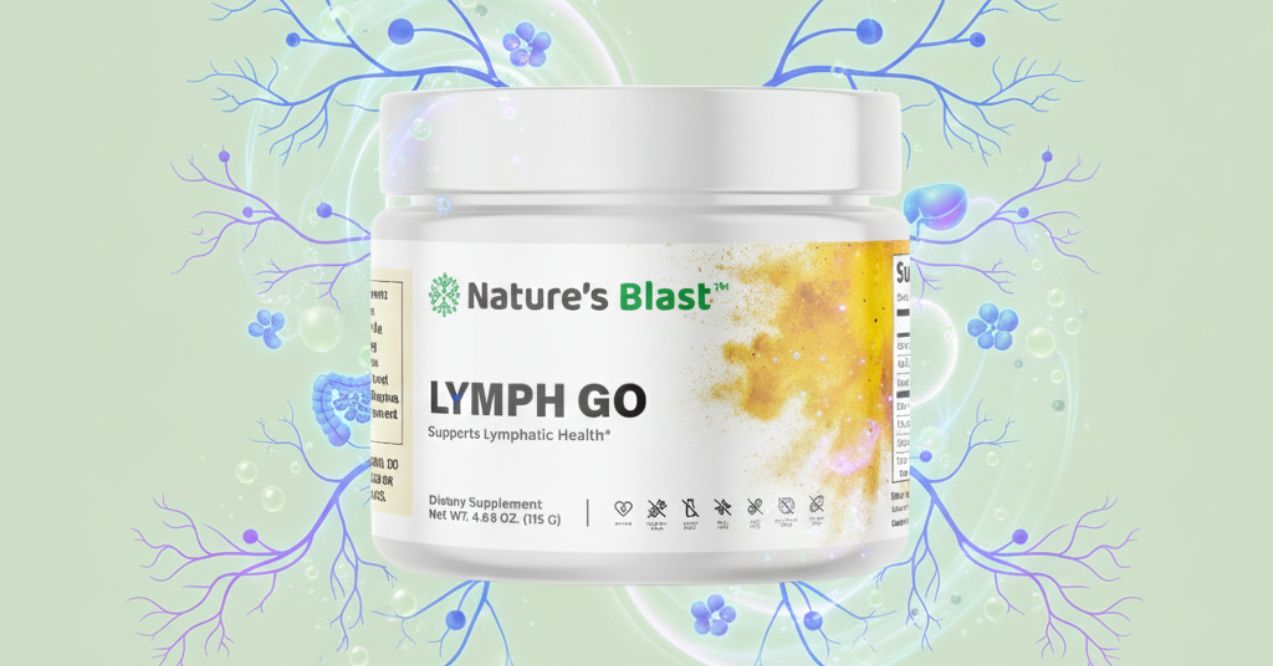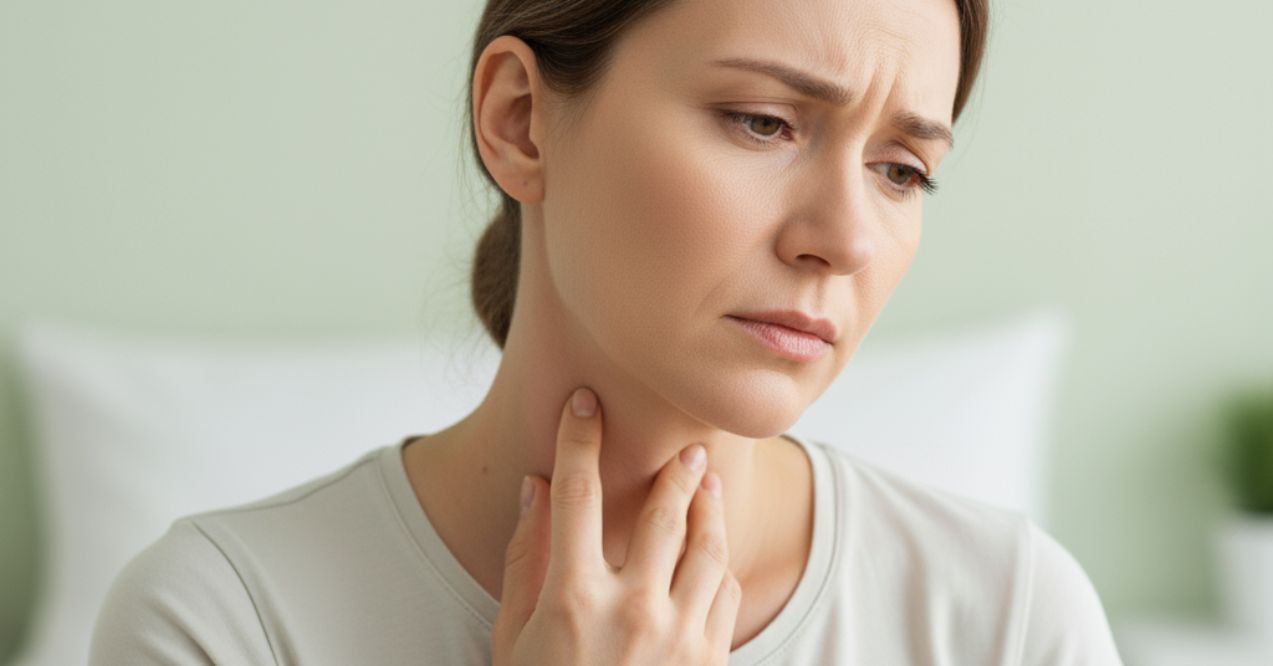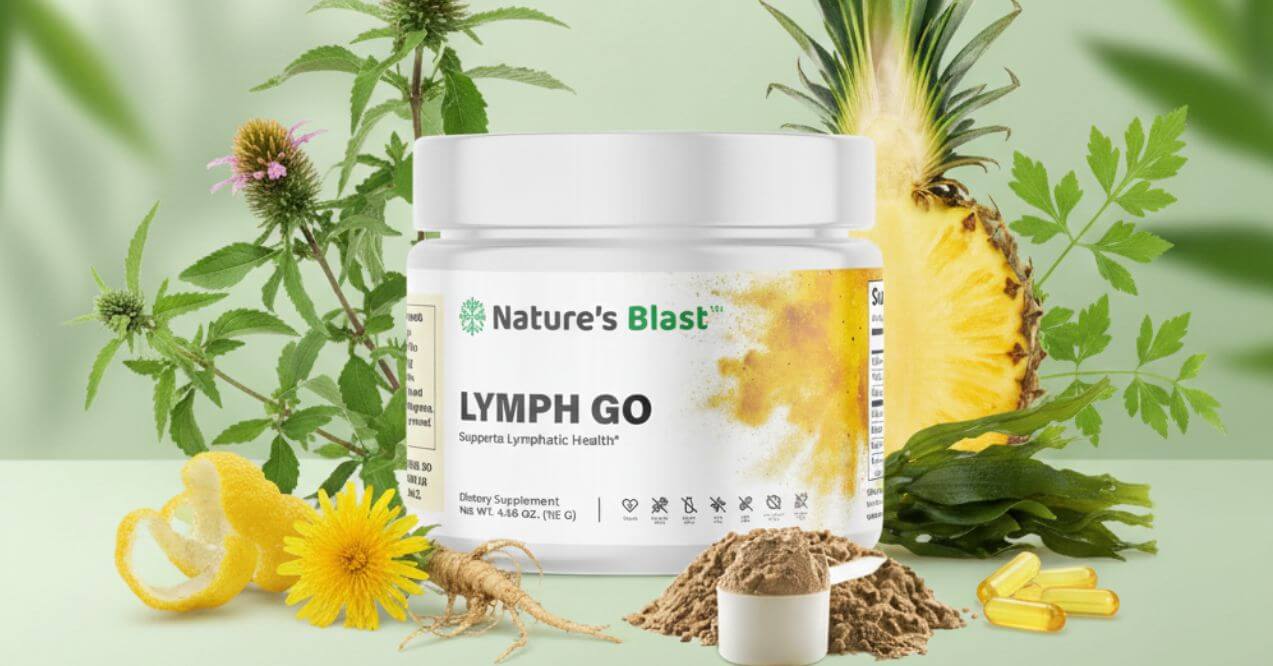Are There Lymphatic Massage Dangers?
Medically reviewed by our experts
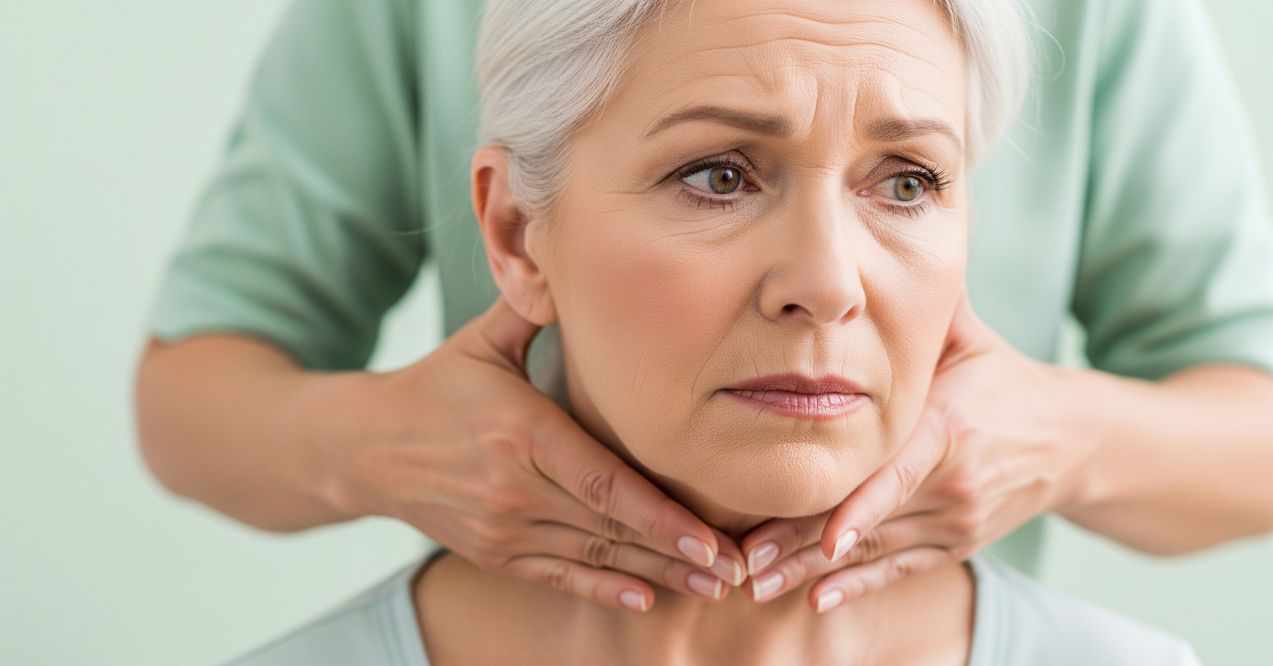

Lymphatic drainage massage is a gentle therapy that supports your body’s natural drainage network. This specialized technique helps maintain fluid balance and supports immune function throughout your body. While many people benefit from this massage, it carries specific risks for certain individuals that you need to know about.
Understanding the Lymphatic System and Massage
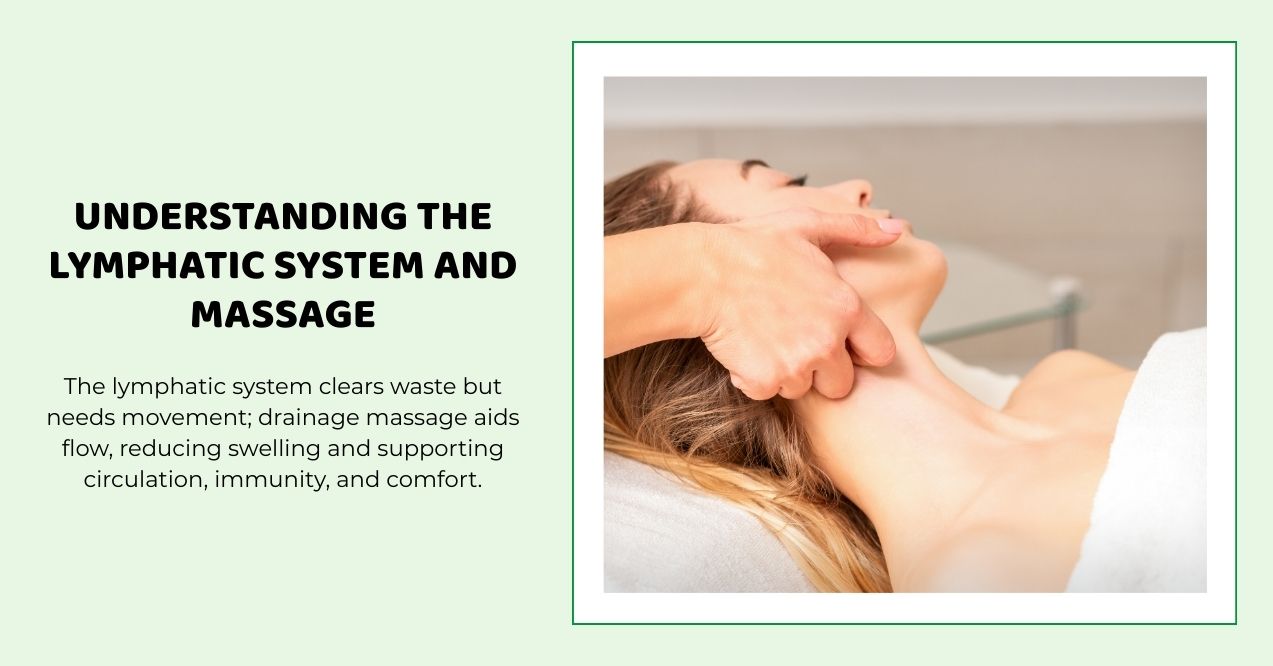
Your lymphatic system works as your body’s cleanup crew, removing cellular waste, toxins, and excess fluid from tissues. Unlike your circulatory system that has your heart as a pump, your lymphatic system depends on muscle contractions and movement to circulate fluid. This makes it vulnerable to slowdowns and blockages.
Lymphatic drainage massage uses gentle, rhythmic movements with light pressure to encourage lymph fluid toward your lymph nodes. These nodes act as filters, cleaning the fluid before it returns to your bloodstream. The technique requires specific hand movements and precise pressure levels.
Key clusters, such as the lymph nodes behind knee, are especially important for lower-body drainage and often play a role when swelling develops in the legs.
The massage may offer several benefits for suitable candidates:
- Alleviates swelling, particularly effective in limbs where fluid accumulates
- Augments circulation, may support nutrient and oxygen delivery
- Supports immune function, promotes removal of unwanted materials
- Reduces discomfort, may help with fluid retention and inflammation
Can You Experience the Lymphatic Massage Dangers?
Several conditions make lymphatic massage potentially harmful. Each situation involves specific risks that could lead to serious complications. Is lymphatic drainage safe for everyone? No, and here’s what you need to know.
1. When the Cardiovascular System is Compromised
Individuals with weakened heart function face significant lymphatic massage dangers. The therapy mobilizes large volumes of fluid quickly, potentially overwhelming an already struggling cardiovascular system. This sudden fluid shift could accumulate around your heart or lungs.
If you’ve recently wondered “should i go to urgent care for swollen lymph nodes” because swelling appeared suddenly with shortness of breath or chest pressure, seek medical evaluation first—do not book lymphatic massage without clearance.
2. In the Presence of an Active Internal or External Imbalance
Your body needs stability when dealing with infections or inflammatory conditions. Lymphatic massage stimulates circulation throughout your entire system. This increased flow could spread harmful substances more rapidly through your body.
Wait until redness, swelling, and warmth subside completely. Active cellulitis, flu, or fever makes this massage particularly risky. Your body needs to return to balance before safely receiving this treatment.
3. When There is a History of Vascular Conditions
Blood clots present one of the most serious lymphatic drainage massage side effects. The massage’s circulation-boosting effects could dislodge existing clots. These loose clots may travel to vital organs, causing life-threatening complications.
Deep vein thrombosis or any clotting disorder requires extreme caution. Even old, resolved clots warrant discussion with your healthcare provider.
Never proceed without medical clearance if you have vascular history. In some cases, people first notice circulation problems through unusual swelling — like asking why is only my left leg swelling? — which can signal an underlying vascular concern requiring medical evaluation.
4. With Impaired Organ Function
Your kidneys and liver filter waste and process excess fluid daily. When these organs function poorly, they cannot handle the additional fluid load from lymphatic drainage. This overwhelms your body’s natural processing systems.
Dangerous fluid retention and swelling may result from treatment. Kidney disease or liver conditions make this therapy particularly risky. Medical supervision becomes essential for anyone with compromised organ function.
5. Regarding the Growth of Malignant Cells
Cancer patients face unique considerations with lymphatic massage. While sometimes beneficial post-surgery, the increased circulation raises concerns about cell movement. Direct massage over affected areas or radiation sites poses additional risks.
Healthcare professionals must approve and supervise any lymphatic work. Timing, location, and technique require careful medical oversight. Never proceed without explicit approval from your oncology team.
6. During Pregnancy
Pregnancy creates major changes in fluid volume and circulation patterns. Your body carefully regulates these changes to support both mother and baby. Lymphatic drainage techniques could disrupt this delicate balance.
Essential oils for lymphatic drainage offer gentler alternatives during pregnancy. Standard prenatal massage provides safer options for most expectant mothers. Always discuss massage plans with your prenatal care provider first.
Common Side Effects and How to Prepare
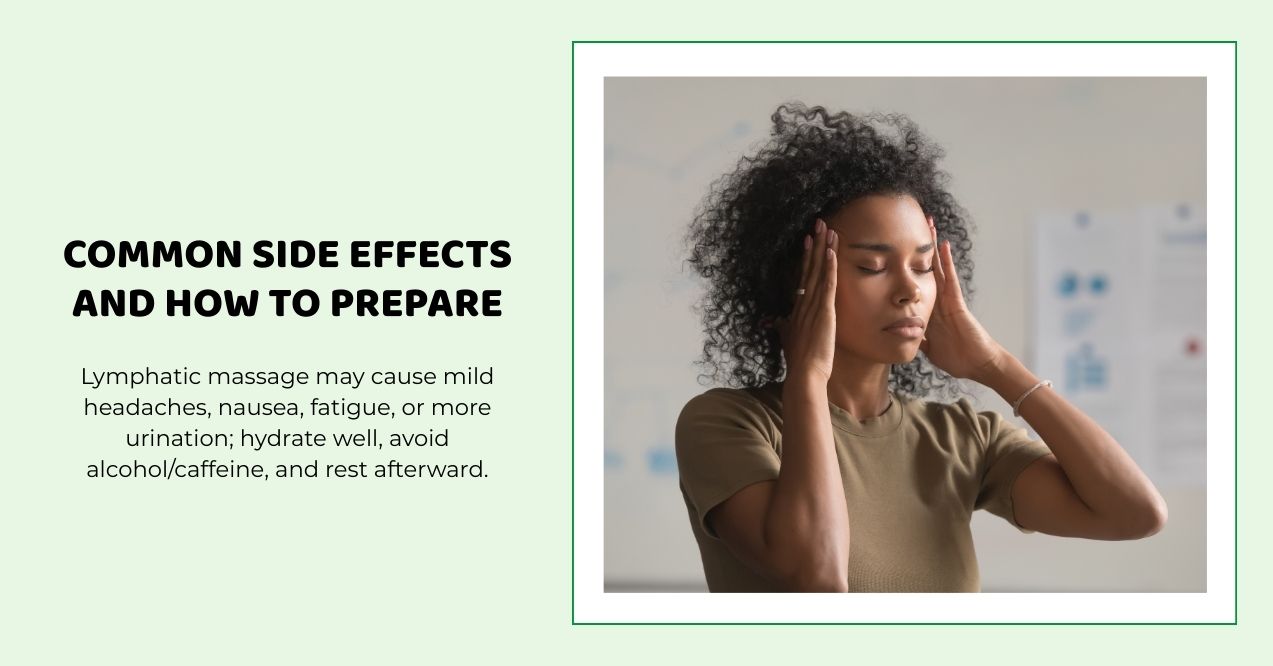
Most people feel relaxed and refreshed after lymphatic massage sessions. However, your body needs time to process the mobilized fluids and toxins. Temporary lymph system support side effects occur as part of the natural elimination process.
Common reactions include:
- Mild headaches as fluid shifts occur
- Temporary nausea, especially after initial sessions
- Fatigue, low energy while your body processes changes
- Increased urination
Proper preparation reduces side effect intensity:
Drink extra water 24 hours before and after your session. Skip alcohol and limit caffeine on treatment day. Plan light activities like walking afterward, but avoid strenuous exercise immediately following treatment.
Your body’s natural detoxification processes benefit from targeted nutritional support. Quality lymphatic drainage supplements containing herbs like cleavers, red clover, and dandelion root may support healthy lymph flow between sessions. These natural ingredients work synergistically to maintain optimal lymphatic function while providing antioxidant protection during the cleansing process.

Lymphatic drainage massage before and after results vary based on individual health status. Some notice immediate improvements while others need multiple sessions. Consistency and proper aftercare maximize your results.
What Happens When Lymphatic Drainage Goes Wrong
Applying the wrong pressure or technique during lymphatic work can cause more harm than good. Gentle, precise movements are essential to protect the delicate vessels and ensure fluid moves correctly.
Key Risks:
- Too Much Pressure – Heavy force can collapse tiny lymph vessels, stopping fluid movement and leading to bruising or swelling.
- Wrong Direction – Fluid must be moved toward the body’s drainage points; incorrect routing can worsen swelling or create new problem areas.
Using proper technique is crucial for safe and effective lymphatic care.
Is Lymphatic Drainage Safe at Home?
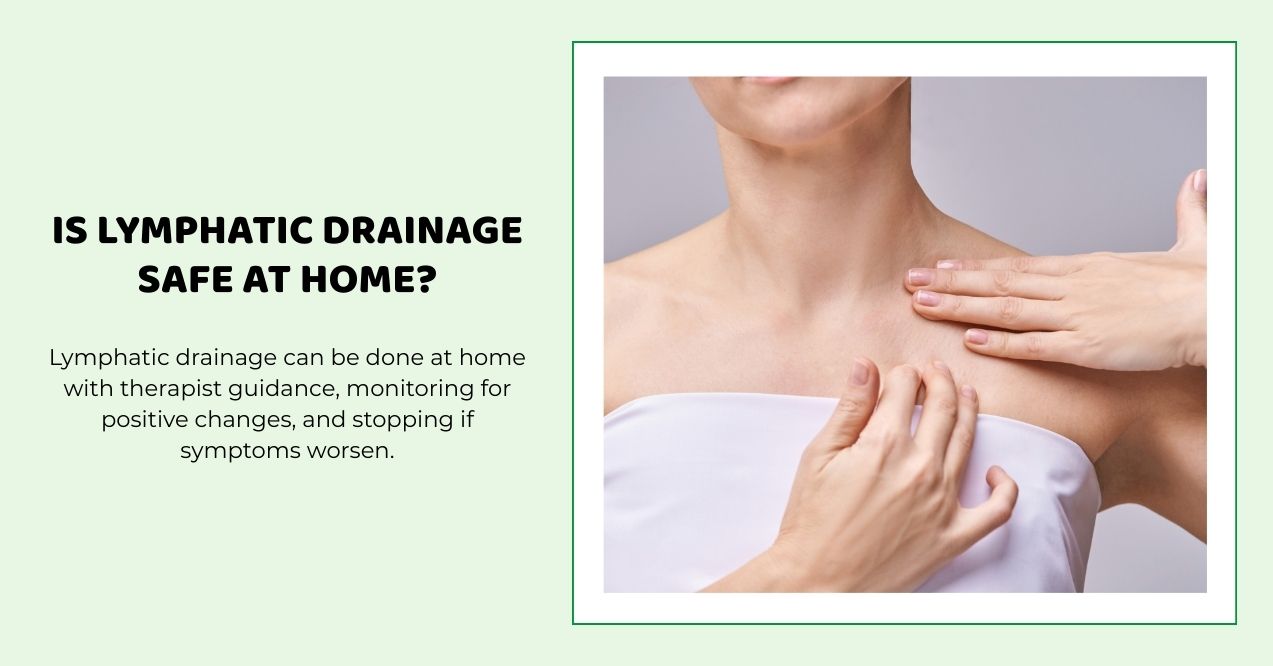
Home care instructions from your therapist extend treatment benefits between sessions. Simple self-massage techniques may maintain results when performed correctly. However, always follow their specific guidance for your condition to avoid complications.
Your body provides valuable feedback about treatment effectiveness. Reduced swelling, improved energy, and better mobility indicate positive response. Persistent problems or worsening symptoms require immediate medical attention.
Red light therapy for lymphatic drainage offers an alternative or complementary approach. This non-invasive option may provide benefits without manual manipulation risks. Discuss all available options with your healthcare team.
Treatment Frequency and Progress Monitoring
Treatment frequency depends on your individual needs and response patterns. Some require weekly sessions initially, then monthly maintenance visits. Others benefit from less frequent but regular treatments based on symptom severity.
Your practitioner should explain each step clearly during treatment. They monitor your response throughout the session for any concerning symptoms. Immediate adjustments or session termination happens if problems arise.
Regular follow-ups help track your progress and adjust treatment plans. Your practitioner should document each session and note any reactions. This record helps optimize future treatments and identify patterns.
Alternative Options for Lymphatic Drainage Massage
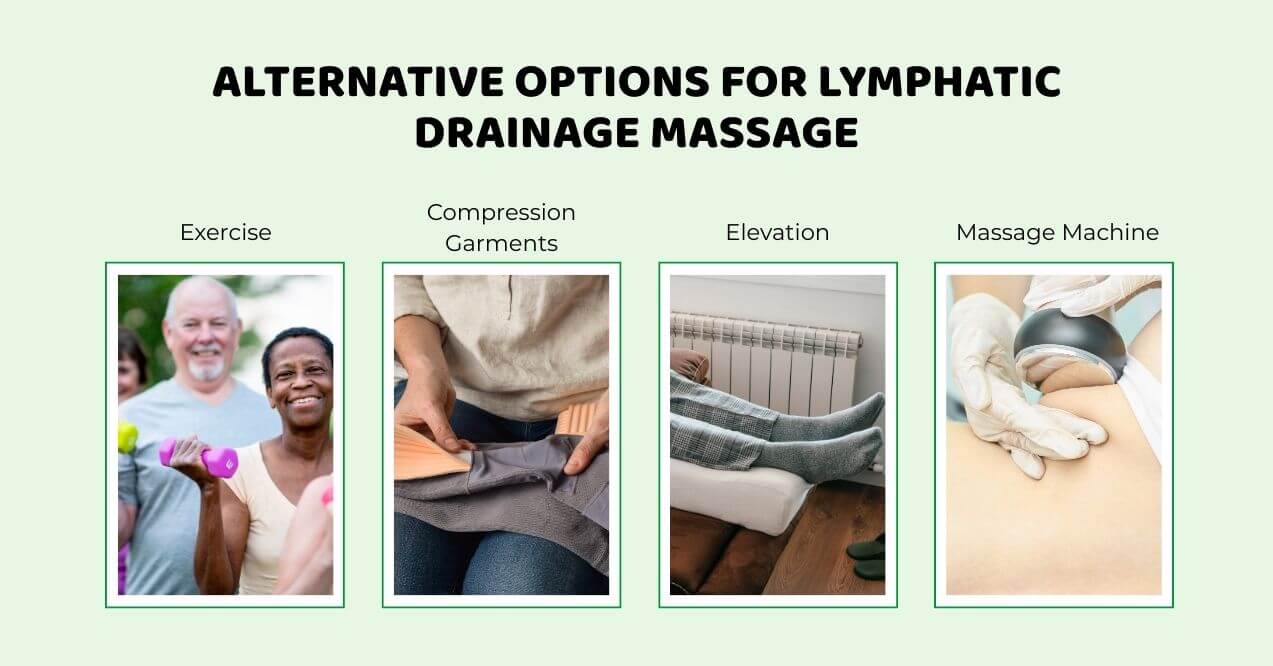
Some individuals may not be good candidates for lymphatic massage due to underlying conditions or health risks. In these cases, alternative therapies can provide safe and effective support. Your healthcare team will guide you toward the best substitutes for your specific needs.
Alternative Options:
- Exercise – Gentle movement stimulates circulation and promotes natural lymph flow.
- Compression Garments – Specially fitted garments support fluid management and reduce swelling.
- Elevation – Raising affected limbs helps minimize fluid buildup and discomfort.
- Massage Machine – Mechanical pumps deliver controlled pressure patterns to encourage drainage; often covered by insurance with proper documentation.
Exploring these alternatives ensures that even if lymphatic massage is not suitable, you still have effective ways to support lymphatic health and overall well-being.
Long-Term Lymphatic Health Management
Long-term management often combines multiple approaches for optimal results. Manual drainage, exercise, nutrition, and compression work together synergistically. Develop a comprehensive plan with your healthcare team for best outcomes.
Seasonal changes may affect your lymphatic system’s function significantly. Hot weather often increases swelling, while cold reduces tissue flexibility. Adjust your treatment schedule accordingly with professional guidance.
Emergency protocols should be established before starting any treatment. Know warning signs requiring immediate medical attention. Have contact information readily available for your healthcare providers at all times.
Conclusion
Lymphatic massage offers potential benefits but carries real risks for certain individuals. Cardiovascular problems, active infections, blood clots, and organ dysfunction make this therapy potentially dangerous. Professional assessment and qualified practitioners ensure your safety throughout treatment. Always prioritize medical consultation before beginning lymphatic drainage therapy to avoid serious complications.
People with heart failure, kidney disease, blood clots, active infections, or cancer should avoid lymphatic massage. Pregnant women need medical approval first. Those with compromised immune systems or recent surgeries require special precautions and professional guidance.
Yes, incorrect technique or treating contraindicated conditions causes serious problems. Excessive pressure damages lymph vessels, wrong directional flow worsens swelling, and mobilizing infections spreads them systemically. Only certified therapists should perform this specialized treatment.
Yes, incorrect technique or treating contraindicated conditions causes serious problems. Excessive pressure damages lymph vessels, wrong directional flow worsens swelling, and mobilizing infections spreads them systemically. Only certified therapists should perform this specialized treatment.
Primary risks include blood clot movement, heart strain from fluid overload, infection spread, and kidney overwhelm. Minor risks involve temporary headaches, fatigue, nausea, and increased urination. Pre-existing conditions determine your specific risk level.
FAQ
References
